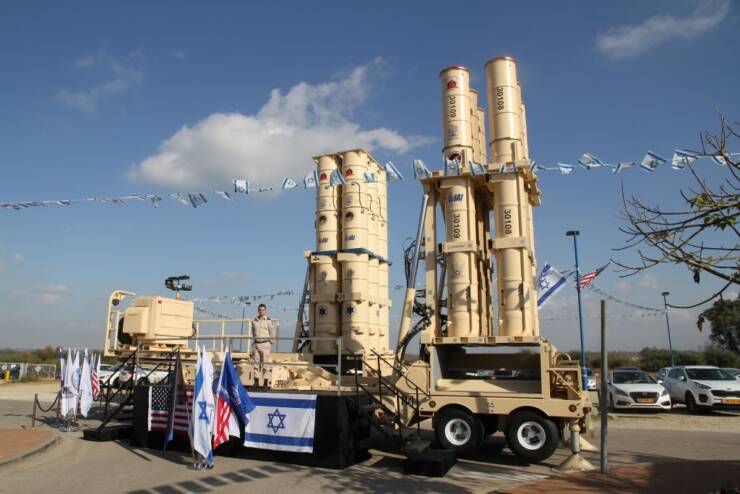
Tel Aviv. Some European countries understand the threat posed by Iranian long range missiles and look for solutions in Israel. While Iran and North Korea are continuing with full force their long range ballistic missiles programs, taking advantage of the indecisive US policy. Countries, mainly in Europe understand the evolving threat and are looking for defensive systems. The answer may come in the shape of an very advanced Israeli interceptor, made in the US. In the meantime, Israel has intensified its efforts to gain the capability to intercept cruise missiles, like the ones used by Iran in the attack on the Saudi oil installations.
There has been a sharp increase in the interest of countries in the Israeli Arrow interceptors. This interesting combination of an Israeli developed – US made, has begun to surface immediately after the very successful intercept tests with the Israeli Arrow-3 interceptor performed in Alaska.
Boeing is currently manufacturing 50 per cent of the interceptor. Israeli ministry of defence sources confirmed that the recent tests in Alaska “have created big interest in some countries, some in Europe but not only ” These countries see the Iranian ballistic missile program as a direct threat on them, and want defence systems . It will be easier for them to purchase such a system manufactured in the US”. This will involve manufacturing most of the complete Arrow system in the US.
The Arrow batteries are interconnected to one command centre which can decide what battery or rather what launcher, will achieve the best results after an incoming missile is detected by the “Green Pine” phased array radar and its advanced versions like the “Super Green Pine” (SGP). Detection is also performed by the Americans who have one missile detection X band radar system in the south of Israel and share with Israel data collected by their spy satellites. The decision on what battery will launch can be made also using the communications network between the batteries with the no need to go through the central command centre.
This sequence was tested successfully in the recent intercept. The decision was made and the incoming surface – air missile that assumed a ballistic trajectory, was destroyed.
Israel has a four layered rocket and missile protection system that is operational and being upgraded continuously. The Arrow 2 and 3, are the upper layers of a system that is designed to defend Israel from rockets and missile. The Rafael “Iron Dome” has intercepted hundreds of short and medium range rockets during the “Protective Edge” operation in Gaza in 2014 and since then many more, some only two weeks ago.
One layer above is the Rafael -Raytheon “David Sling” designed to intercept longer range rockets and cruise missiles. All these system are either fully operational or one step from it.
As reported by Raksha Anirveda, Israel Aerospace Industries (IAI) has begun the series production of the Barak ER, the new member of its air Barak family of air defence missiles. The Barak ER Air Defence System, developed by IAI, combines the capability to intercept airborne threats at an extended range of 150 kilometres and ballistic targets. The ER interceptor is part of IAI’s BARAK Air Defence System’s family, capable of various ranges. The extended range capability is made possible in part by adjusting the interceptor and MMR radar capabilities to a 150 km range, and can be fitted for land and maritime use.
The BARAK ER interceptor tested in the trial series was taken directly from the company’s production line. The BARAK ER revolutionizes air defence with unprecedented flexibility, both in real-time full net-centric combat management as well as with unique smart launchers. The launchers are capable of independently launching and managing any mix of interceptors without a dedicated command post on site. The sophisticated battle management system optimizes the interceptors to match threats in real time. Thanks to these features, an operator can create unique responses to a mix of interceptors across different threats, as well as phase their procurement gradually according to budget constraints. This system according to some sources is already creating interest in some European countries.








